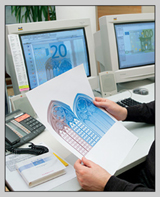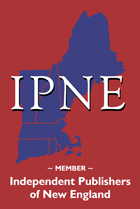Editorial & Graphic Design Services
Variety Arts Press offers editorial, graphic, and publications assistance to selected projects in the fields of history, genealogy, historic preservation, museum interpretation, and performing arts.
The world can change, shudder, turn upside-down, and then inside-out. Technology can evolve and devolve. Fashions, habits, lifestyles, and money can come and go. But we humans still need to communicate. So ... despite all the hoopla about artificial intelligence and ChatBot ... there is still a need for real humans who can organize ideas and express them concisely, gracefully, and effectively --- in both speaking and writing. Further, decades of study in readability and cognitive psychology have proven that the way text is presented on a page or screen, and the integration of text and image, is of vital importance to effective communication. Yet the field of on-paper graphic design, web site design, video, and typography is by nature very fluid, alternately leading, and then following, the ever-evolving reading/viewing/clicking/tapping audience. R.W. Bacon of Variety Arts Enterprises has been a practitioner and student of this text-and-image communication for 50 years. That's long enough to be valued as a master of the craft (... or to be dismissed as utterly irrelevant!).

R.W. Bacon was following his first career as a newspaper journalist/editor when he had the good fortune to became a student --- and later a disciple --- of Edmund C. Arnold (1913-2007), the editor, typographer, and designer regarded as "The Father of Modern Newspaper Design" (See sidebar). The main principle of Arnold's typography and design --- still embraced by professionals around the globe --- is that publication layouts should be based on quantifiable readability studies, tests, and observations --- not on either the limitations of a given technology or the self-indulgent excess of the design fad-of-the-moment. In history and museum projects that endeavor to enhance public understanding, R.W. Bacon's skill in communicating with text and image extends to photos, maps, charts, graphs, and exhibition graphics.

R.W. Bacon brings to increasingly select projects the craftsmanship of a skilled writer, the discipline of an old-school news editor, and the design sense of a master visual communicator.
But talk is cheap! See relevant work samples and commentary by clicking on the links below. If rapidly-disappearing old-school editorial and graphic expertise is valuable to your project, feel free to inquire whether your project can get in line to be completed before either you or I turn 100.
--- R.W. Bacon
Talk is cheap. Hit the links and see the work.
- A Newsletter
Content & design for a history & genealogy organization.
- Promotional Material
A rack card for a historic house museum.
- Interpretative Material
Handouts for a group of historic houses.
- Maps & Diagrams
Explanatory diagrams & interpretive maps.
- Sign System
Typographically consistent sign system for education programs.
- Presentation Graphics
Exhibition graphics suitable for digital projection.
- Exhibition Design
Lobby exhibition to complement a living history presentation.
- Photo Restoration
Before-and-after example of sensitive digital restoration of a damaged 1890s photo. (N.B.: This approach is for aesthetics and presentation only, and is not appropriate for archival or historical records preservation.)
- Genealogy Fan Chart
Custom fan-chart shows eight generations plus context.
- The Whole Damm Family
A fanciful family history photo display --- and legitimate template.
- T-Shirt Design
T-shirt design for a history & genealogy organization.
- Book Designs
Check out any of the Variety Arts Press titles on this website.
- Poster Design
Whimsical motivational poster. (Reduced for easy viewing.)
- Large-Format Poster Design
24" x 36" poster-size full-color photo montage (reduced).


